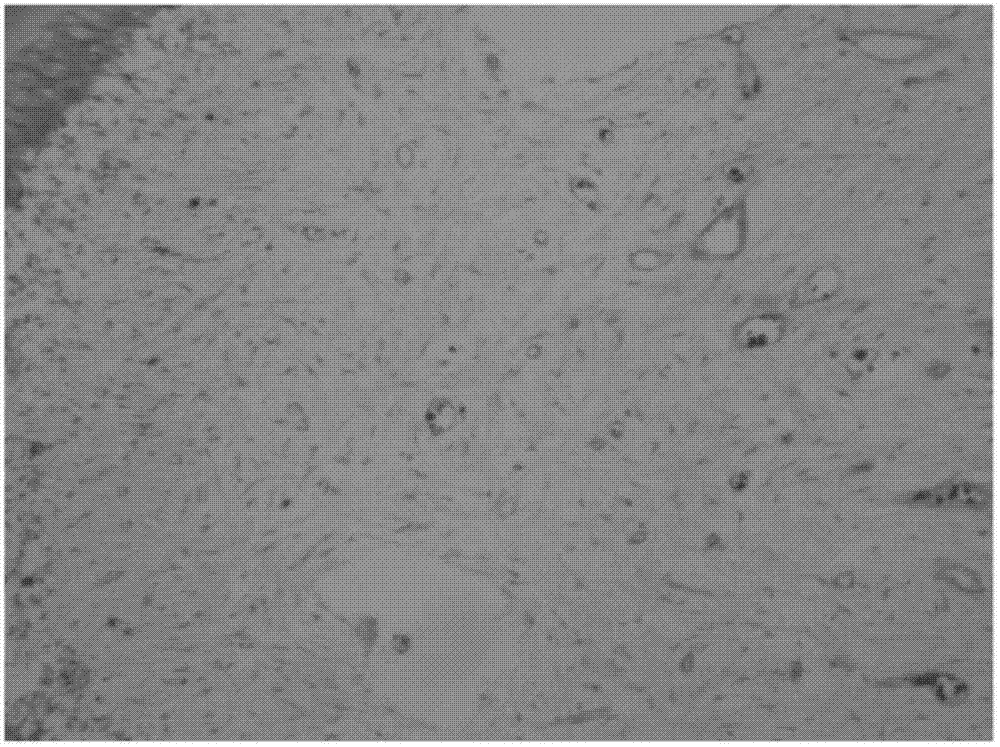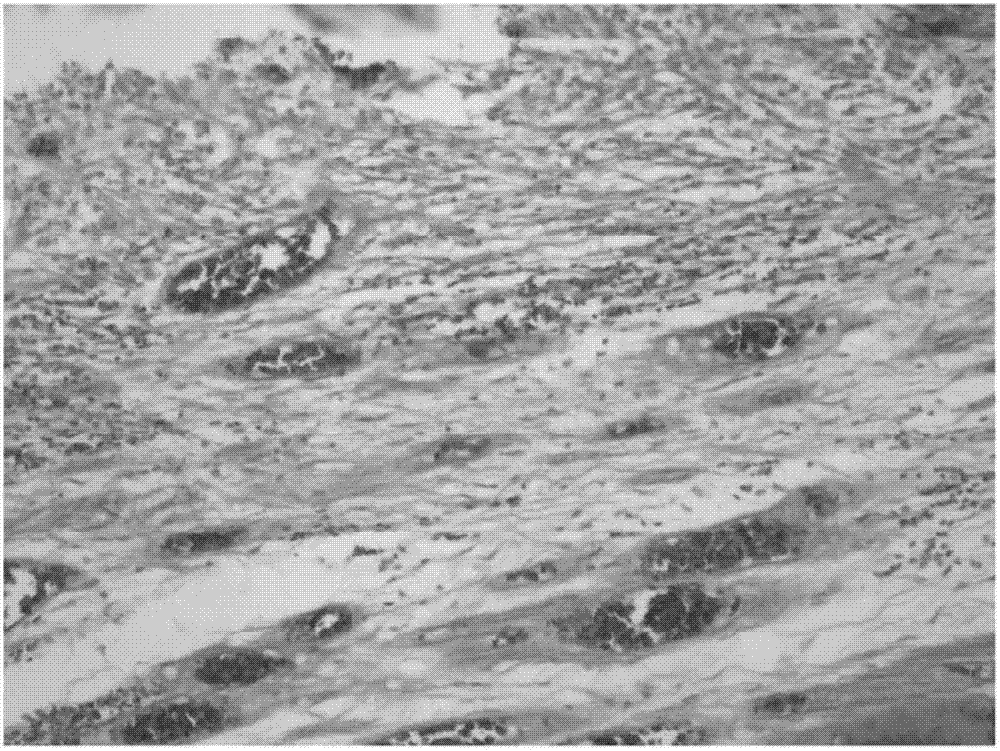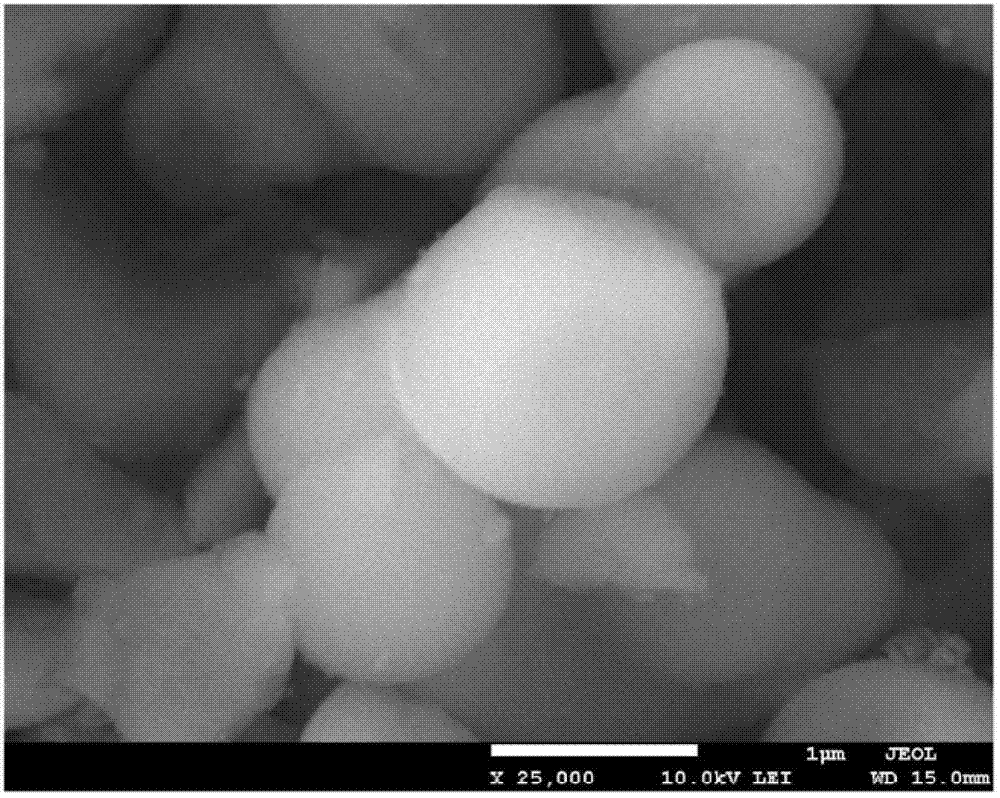Composition for preventing or treating dentin-associated symptoms or diseases, and method using the same
A composition, dentin technology, applied in the direction of drug combination, phosphorus compound active ingredient, dentistry, etc., can solve the problem of unable to provide long-term efficacy, removal, etc.
- Summary
- Abstract
- Description
- Claims
- Application Information
AI Technical Summary
Problems solved by technology
Method used
Image
Examples
Embodiment 1
[0062] Example 1: Synthesis of porous particles composed of silica
[0063] Add 1g (grams) of gelatin to 25g of deionized water, and place it in a constant temperature water tank at 40°C and stir for about 15 minutes until completely dissolved to form an aqueous gelatin solution.
[0064] Next, 4 g of sodium silicate was dissolved in 100 g of water, and placed in a constant temperature water bath at 40° C. and stirred for about 2 minutes to form an aqueous solution of sodium silicate.
[0065] On the other hand, add about 3.0mL (milliliter) of 6M sulfuric acid solution into 100g of water, and stir evenly to prepare an acidic aqueous solution with a pH value of about 1. Mix the aqueous sodium silicate solution with the acidic aqueous solution and adjust the pH to around 5. Next, let the sodium silicate mature for 3 minutes, then add the above-mentioned aqueous gelatin solution, place it in a constant temperature water bath at 40°C and stir for about 2 hours until the reaction ...
Embodiment 2
[0068] Example 2: Preparation of porous particles of silica containing calcium carbonate
[0069] Dissolve 0.09g of oxalic acid in 10g of deionized water, and then add 0.84g of calcium carbonate to form a first intermediate solution. Next, 10 g of alcohol was added to the first intermediate solution, and after stirring, 0.5 g of porous particles composed of silicon dioxide synthesized in Example 1 was added to form a second intermediate solution.
[0070] The above-mentioned second intermediate solution was stirred until dry, then put into an oven, and stood at 100° C. for one day. Next, put the product taken out from the oven into an air-filled high-temperature furnace, raise the temperature to 200 to 400° C., and keep the temperature for 5 hours. Finally, calcium carbonate-containing silica porous particles (hereinafter referred to as Ca-Si based porous particles (Ca-Si based porous particles)) are obtained. Such as figure 1 Shown is the SEM observation result of the calc...
Embodiment 3
[0072] Example 3: Preparation of preparations containing calcium-silica-based porous particles
[0073] 85.7% commercially available phosphoric acid (phosphoric acid, J.T. BAKER NALYZED, USA) was diluted with deionized water into a 31% phosphoric acid solution. Mix 0.05 g of the calcium-silicon-based porous particles obtained in Example 2 with 0.15 mL of a 31% phosphoric acid solution to prepare a porous particle preparation of silicon dioxide containing calcium carbonate (hereinafter referred to as CaCO 3 Porous SiO 2 preparation).
PUM
| Property | Measurement | Unit |
|---|---|---|
| Particle size | aaaaa | aaaaa |
| Aperture | aaaaa | aaaaa |
| Aperture | aaaaa | aaaaa |
Abstract
Description
Claims
Application Information
 Login to View More
Login to View More - R&D
- Intellectual Property
- Life Sciences
- Materials
- Tech Scout
- Unparalleled Data Quality
- Higher Quality Content
- 60% Fewer Hallucinations
Browse by: Latest US Patents, China's latest patents, Technical Efficacy Thesaurus, Application Domain, Technology Topic, Popular Technical Reports.
© 2025 PatSnap. All rights reserved.Legal|Privacy policy|Modern Slavery Act Transparency Statement|Sitemap|About US| Contact US: help@patsnap.com



